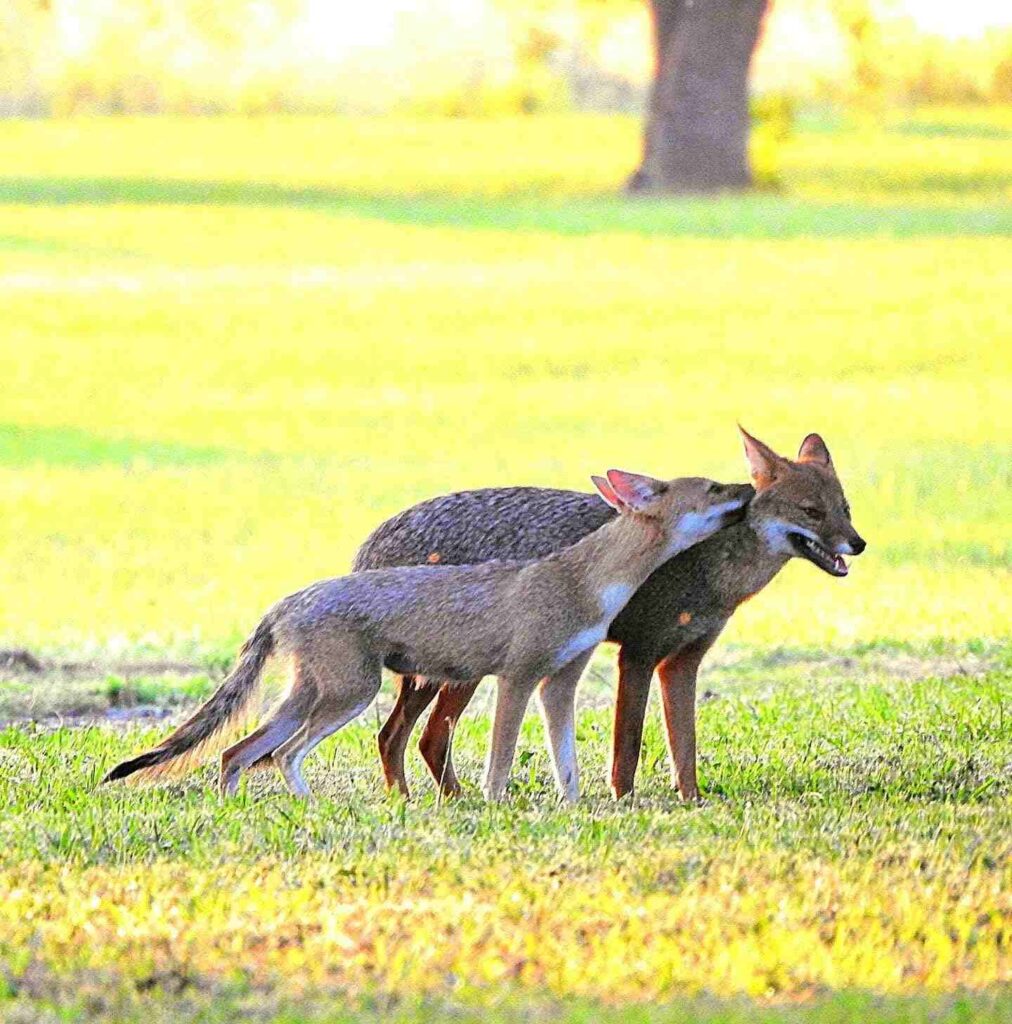
The South American gray fox, also known as the Patagonian fox or chilla, is one of the most frequently spotted mammals in southern Argentina and Chile. Despite its name, this small wild canid is not a true fox but a zorro, part of the genus Lycalopex. Agile, intelligent, and highly adaptable, the gray fox is a charismatic representative of the Patagonian steppe.
With its curious gaze and stealthy movements, it’s a common yet enchanting sight along remote trails and roads in Patagonia.
Where to Find It
The gray fox has a wide range in southern South America, especially:
- Patagonian steppe and grasslands in Argentina and Chile
- National Parks like Torres del Paine, Los Glaciares, and Perito Moreno
- Along Ruta 40, often seen at dawn or dusk
- You can also find Grey Foxes in other areas out of Patagonia, such as the Iberá Wetlands.
It favors open shrubland, semi-arid plains, and forest edges, often near mountainous terrain or dry valleys.
Physical Characteristics
The South American gray fox is small and sleek, with distinct features that help it thrive in its harsh environment:
- Body length: Around 60–75 cm (24–30 in)
- Tail: Thick and bushy, about 30–40 cm (12–16 in)
- Weight: 2.5–4.5 kg (5.5–10 lbs)
- Fur: Grayish coat with reddish hues on the legs and flanks
- Face: Slender muzzle with a white throat and black-tipped ears
Its coat provides excellent camouflage against the Patagonian landscape, helping it blend in among shrubs and rocky terrain.
Behavior and Diet
The gray fox is primarily nocturnal or crepuscular, though it’s not unusual to see one during the day in remote areas. It is solitary or found in pairs, and highly opportunistic in its diet.
Diet includes:
- Rodents and small mammals
- Birds and eggs
- Fruits, berries, and insects
- Carrion and even human food scraps in frequented areas
Thanks to this adaptability, the gray fox thrives in environments where other predators may struggle.
Reproduction and Lifespan
- Mating usually occurs in late winter, with 2–5 pups born in spring
- The young stay in dens dug into hillsides or under rocks
- Lifespan in the wild is around 6–8 years, though some live longer in protected areas
Pups are raised by both parents and start hunting independently after a few months.
Conservation Status
The South American gray fox is currently listed as Least Concern, due to its wide distribution and adaptable nature. However, certain localized threats persist:
- Habitat fragmentation
- Vehicle collisions (especially near parks and rural roads)
- Conflict with livestock owners, although they pose little actual threat to sheep
In protected areas, the fox plays a vital role in controlling rodent populations and maintaining ecosystem balance.
Wildlife tours in Argentina and Chile
The South American gray fox is a quintessential Patagonian creature—wary yet bold, wild yet visible. As one of the region’s most charming inhabitants, it’s a reminder of how wildlife and vast landscapes coexist in the heart of South America’s southern frontier. Whether glimpsed crossing a trail or perched on a rocky hill, the chilla adds a quiet thrill to any journey through Patagonia.
We’re a local tour operator based in Buenos Aires, which offers custom tours in Patagonia and other regions of Argentina and Chile. We invite you to contact us, and start planning your next incredible journey to South America!
Get inspired by some of our travel ideas, listed below:
Puma Tracking Tour and Orca Watching
Mision Province & Ibera Wetlands
Orca Whale Watching in Patagonia Argentina
Iguazu Falls, Peninsula Valdes and the Wetlands
Where to see Penguins in Patagonia
Peninsula Valdes: Wildlife Tour
0













